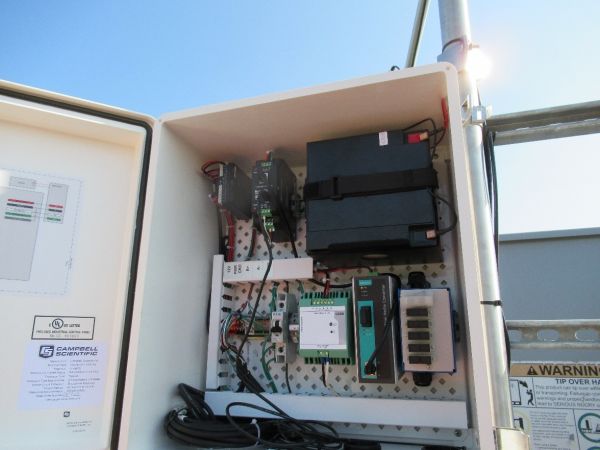The Importance of Distributed Meteorological Data for Solar Farms
by Libbie Anderson | Updated: 05/01/2020 | Comments: 0

On every utility-scale solar farm, it’s crucial to answer the fundamental question: how much solar radiation reaches the surface of the photovoltaic (PV) modules? These farms span hundreds of acres and in order to address this question, owners use meteorological monitoring stations and data loggers to determine the performance of the project.
The 2017 IEC 61724-1 standard for solar project performance monitoring can create several pain-points when implementing compliant monitoring systems. This standard recommends a minimum number of instruments to be distributed throughout a solar farm to adequately monitor a PV system, which can make site instrumentation a time-consuming process. Additionally, the cost of utilizing multiple traditional solar meteorological stations to connect to distributed sensors can be a pricey endeavor and a logistical nightmare.
Of course, you can’t succeed without collecting distributed data. Without it, solar farms won’t have access to data that provides an accurate representation of their efficiency. Designed with distributed monitoring in mind, Campbell Scientific’s MeteoPV allows you to avoid the expensive and daunting task of compliance to the IEC 61724-1 standard.

Product Solution
The MeteoPV platform functions as a secondary weather station, allowing sensors to be stationed further away from primary weather stations. This is an effective way for you to meet IEC guidance standards and gather more spatially distributed data in less time and at a lower cost. Distribution of stations is beneficial for collecting comprehensive field data across a large solar farm with varying terrain and features.
Some operators of solar farms may also be interested in the MeteoPV’s compatibility with a wide range of sensors. This feature allows you to collect and analyze different types of data from a suite of sensors. The advantage of the MeteoPV’s versatility is that you don’t need a traditional data logger, which requires more implementation time, to connect to different types of sensors; the MeteoPV saves you time when integrating them in the field.

Seeing the Data
After a simple installation, and configuring your stations, you’re ready to see your data. The MeteoPV’s internal web UI lets you select multiple sensors and see your data without the need for software or coding. Eliminating the time-consuming process of coding allows you to receive visual feedback with a live data stream instantaneously. Again, this function is meant to save time so you have access to your data and can perform your analytics quicker.
Is the MeteoPV right for you?
You may be wondering if the MeteoPV would be helpful for your project. Ask yourself the following questions to see if the benefits match your needs:
- Do I need to implement an IEC 61724-1-compliant monitoring system for my solar farm?
- Do I want to improve performance monitoring on my currently operating solar farm?
- Do I need to add measurements to my existing solar farm without overspending?
- Do I want a way of commissioning and maintaining my MET station that requires no software or programming?
If you answered yes to any of these questions, visit the MeteoPV product page to learn more or contact us at (435) 227-9120 with all of your inquiries.















 Libbie Anderson was the Marketing Assistant in the Renewable Energy Group and then the Environmental Group at Campbell Scientific, Inc. She worked to connect clients to Campbell Scientific solutions through marketing and media to educate people about Campbell Scientific.
Libbie Anderson was the Marketing Assistant in the Renewable Energy Group and then the Environmental Group at Campbell Scientific, Inc. She worked to connect clients to Campbell Scientific solutions through marketing and media to educate people about Campbell Scientific.
Comments
Please log in or register to comment.